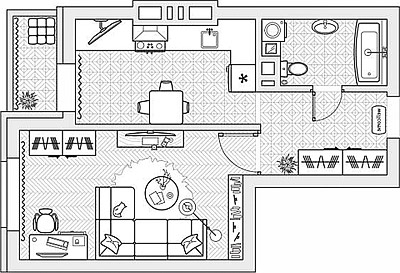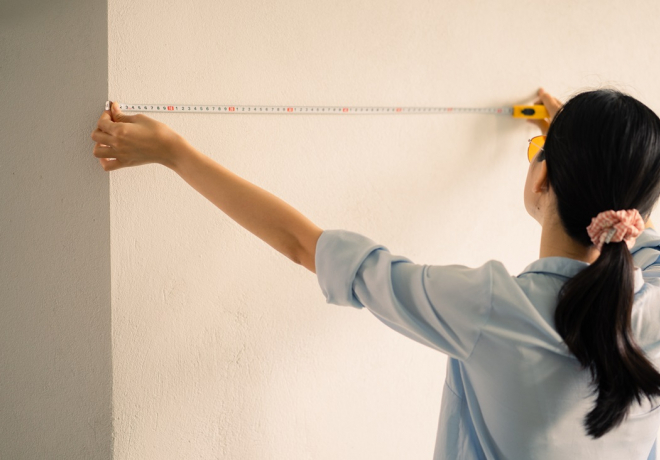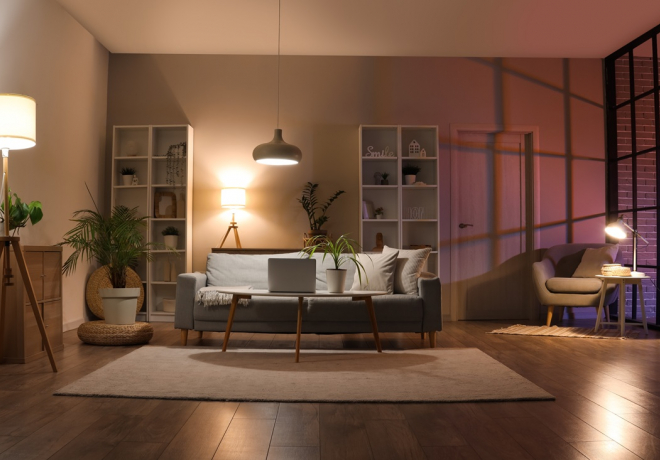Your go-to resource for expert insights and carefully curated professional advice. Plan your renovation with confidence and ease
A Room That Grows With Your Child: Designing a Space That Lasts
10.06.2025, 09:46 GMT Views: 690 Likes: 18
Smart tips for designing a kids' room that grows with them.
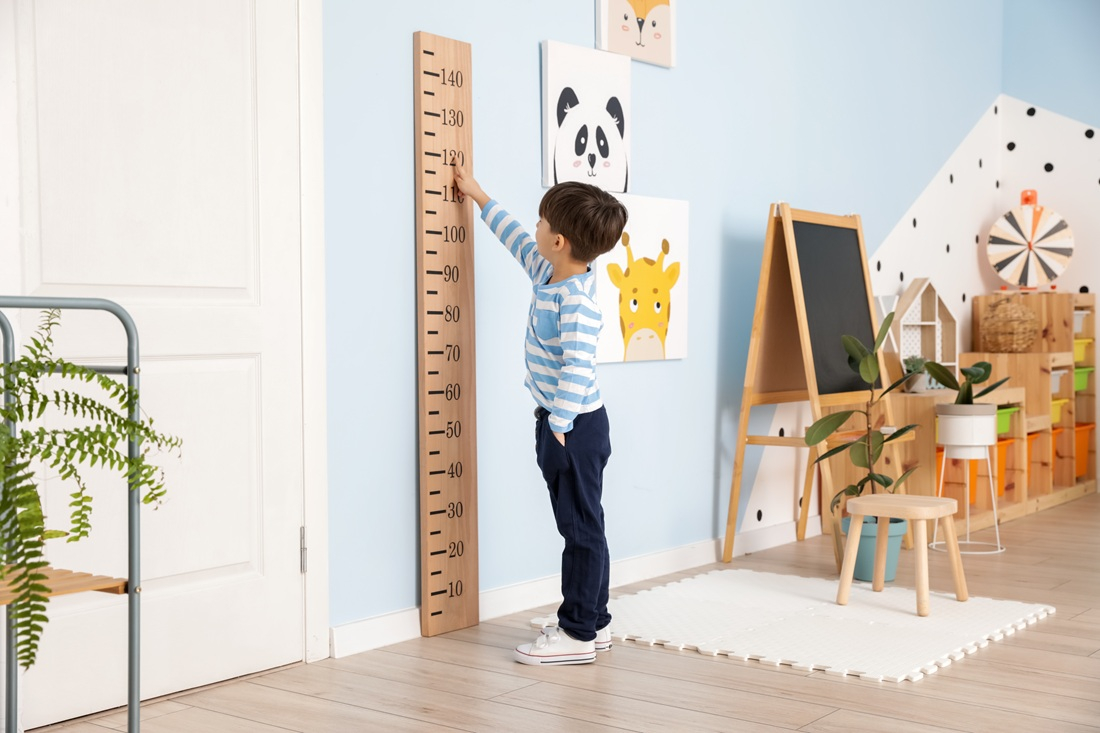
Designing a child’s room is one of the most exciting parts of planning a home — but also one of the trickiest. Children grow fast, and their needs, habits, and interests change just as quickly. A room that feels perfect for a toddler may seem outdated or limiting just a few years later. That’s why designing a children’s room “for growth” — one that evolves over time — is a smart, future-ready strategy. Here’s how to do it.
1. Think Long-Term From the Start
It’s easy to get carried away with cute details and age-specific themes, but before you commit to pink walls, race car beds, or zoo-animal wallpaper, pause. A well-designed room should adapt over time — ideally for the next 7–10 years — without major overhauls.
Instead of designing for a specific age or phase, focus on building a timeless foundation:
- Choose clean, versatile layouts that aren’t tied to bulky or fixed elements.
- Invest in neutral finishes for floors, walls, and large furniture.
- Leave room for personality and change through flexible decor and accents.
The children’s room accessories section in Remplanner’s catalog offers plenty of playful details to bring charm and warmth to your child’s space — from cuddly soft toys to cheerful wall art.
Take wallpaper, for example. A jungle or zoo print may seem irresistibly adorable, but it can quickly feel outdated. A more future-proof option? Choose a neutral wallpaper and accent it with framed animal illustrations. This creates the same whimsical feel for a young child, but with the bonus of easy updates — simply swap out the artwork for posters, photos, or hobbies as your child grows.
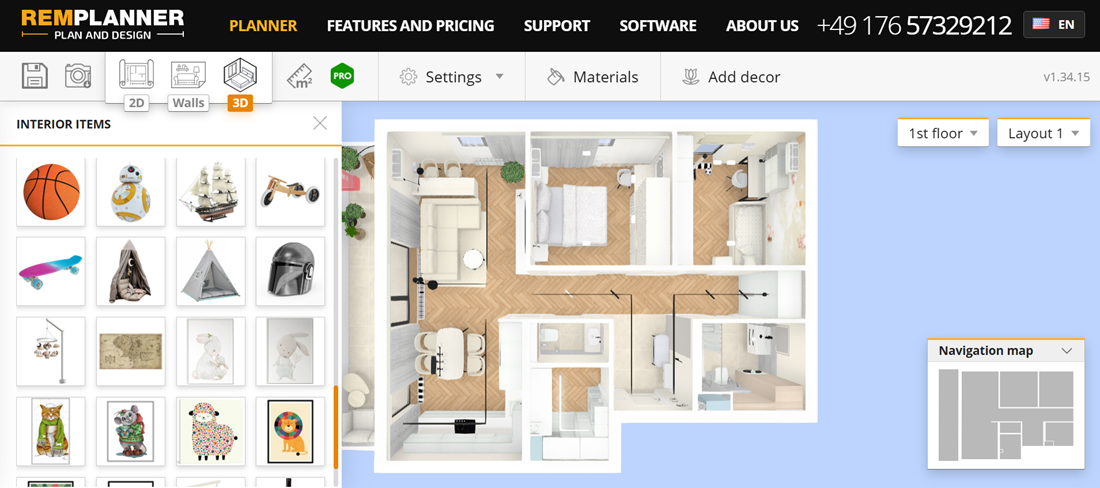
Your goal is to create a backdrop that can grow with your child — just like a good pair of shoes with room to stretch.
2. Use Transformable Furniture
Children’s furniture doesn't have to be disposable. In fact, buying smart, multi-purpose pieces can save money and reduce waste in the long run.
Here are a few examples:
- A crib that converts into a toddler bed, then a junior bed
- A changing table that turns into a regular dresser
- Desks with adjustable height that grow along with your child
- Modular shelving systems that can be reconfigured as storage needs change
- Beds with built-in drawers or trundles to save space and add functionality
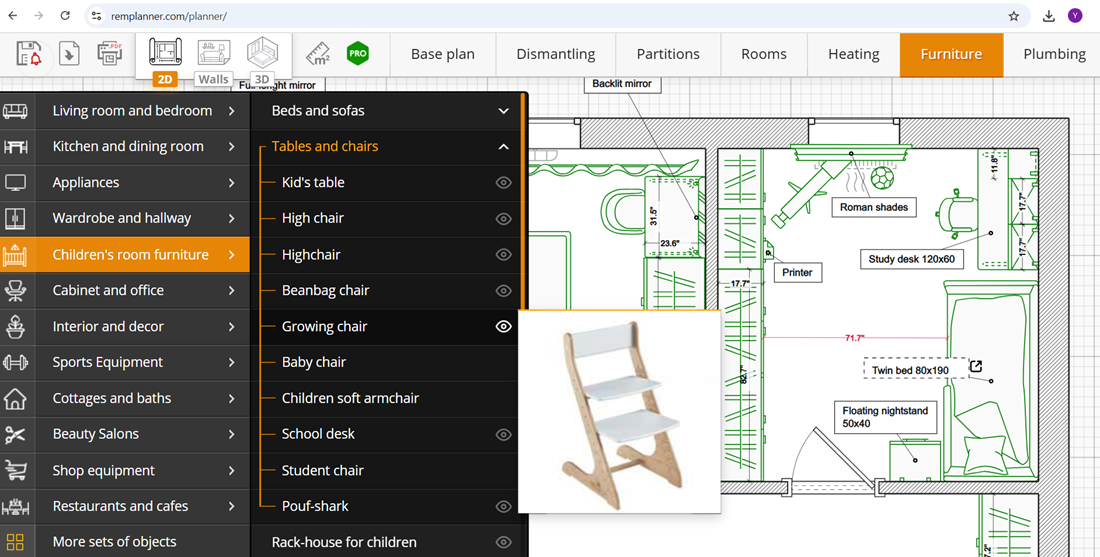
Look for furniture with timeless shapes, neutral colors, and strong materials. These pieces won’t feel “babyish” after just a few years — and you won’t need to redo the whole room every time your child grows a few centimeters.
3. Create a Flexible, Future-Proof Layout
Children use their rooms in different ways at different ages — and often in unpredictable ones. Toddlers need space for play on the floor, while school-age children want a desk or reading corner. Teens might need a private nook for study or hobbies.
To support these shifts, plan a flexible room layout:
- Keep the center of the room open for movement and change.
- Use zoning: designate areas for sleep, study, play, and storage.
- Avoid built-in fixtures that are hard to move or update.
- Consider movable partitions, rugs, or low shelves to create subtle divisions.
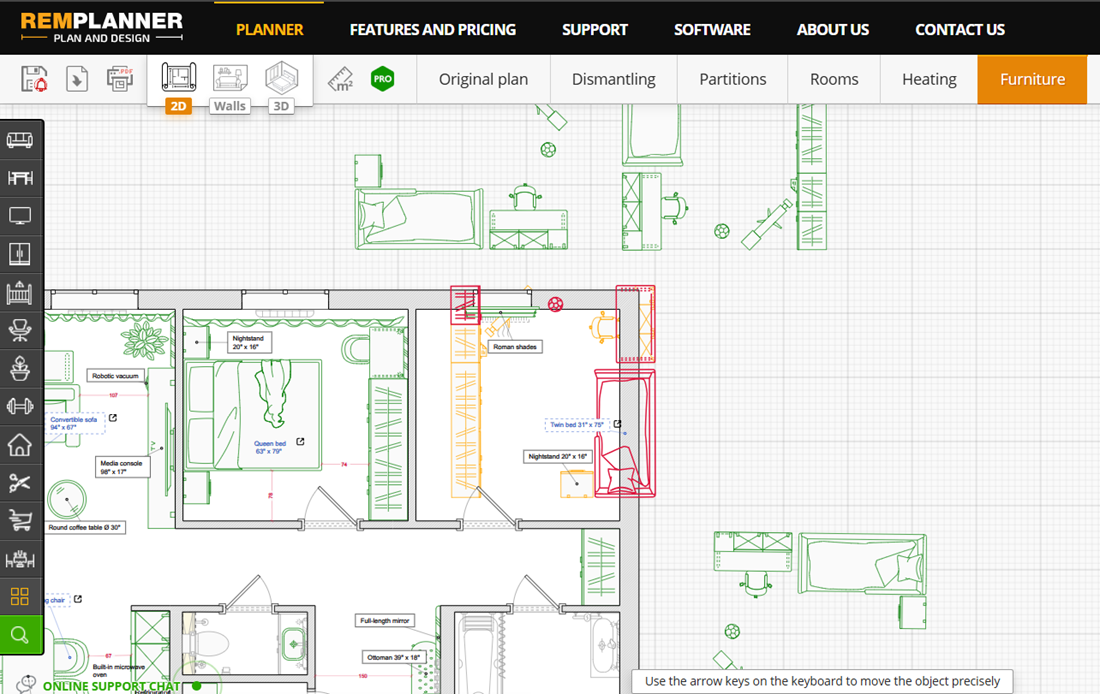
When planning the layout, a digital floor planner like Remplanner makes a big difference. You can visualize each stage of your child’s growth — from crib to study desk — and see how everything will fit before buying a single piece of furniture.
4. Choose Materials and Colors That Last
Young children can be messy — and teenagers can be unpredictable with their taste. That’s why it’s wise to choose durable, washable materials and timeless color palettes.
Here are a few strategies:
- For walls, pick soft, calming tones like pale green, warm beige, or muted blue. These shades work across ages and can easily be refreshed with decals, posters, or framed art.
- Use natural materials like wood or linen that wear well and age beautifully.
- Opt for machine-washable fabrics on curtains, cushions, and bedding.
- Choose hardwearing flooring (like quality laminate or engineered wood) that can withstand toy cars, spills, or craft supplies.
Don’t worry — “neutral” doesn’t mean boring. Think of it as a canvas for personality: a space that grows and adapts as your child discovers who they are.
5. Plan Storage That Supports Independence
As children grow, so does their collection of stuff — toys, books, clothes, school supplies, art projects. Without good storage, even the best-designed room can become cluttered and frustrating.
But storage isn’t just about hiding the mess. It’s also a tool for teaching responsibility and organization. Well-designed storage can help kids take ownership of their space — and keep it tidy.
Here’s how:
- Use low, open shelves for younger kids so they can see and reach everything.
- Label bins with pictures and words to teach categorization.
- Include a few closed cabinets or baskets for things that don’t need to be visible.
- For older kids, provide drawers, folders, or wall-mounted organizers that suit their schoolwork and hobbies.
- Keep a “donate or recycle” bin in the room to encourage decluttering habits.
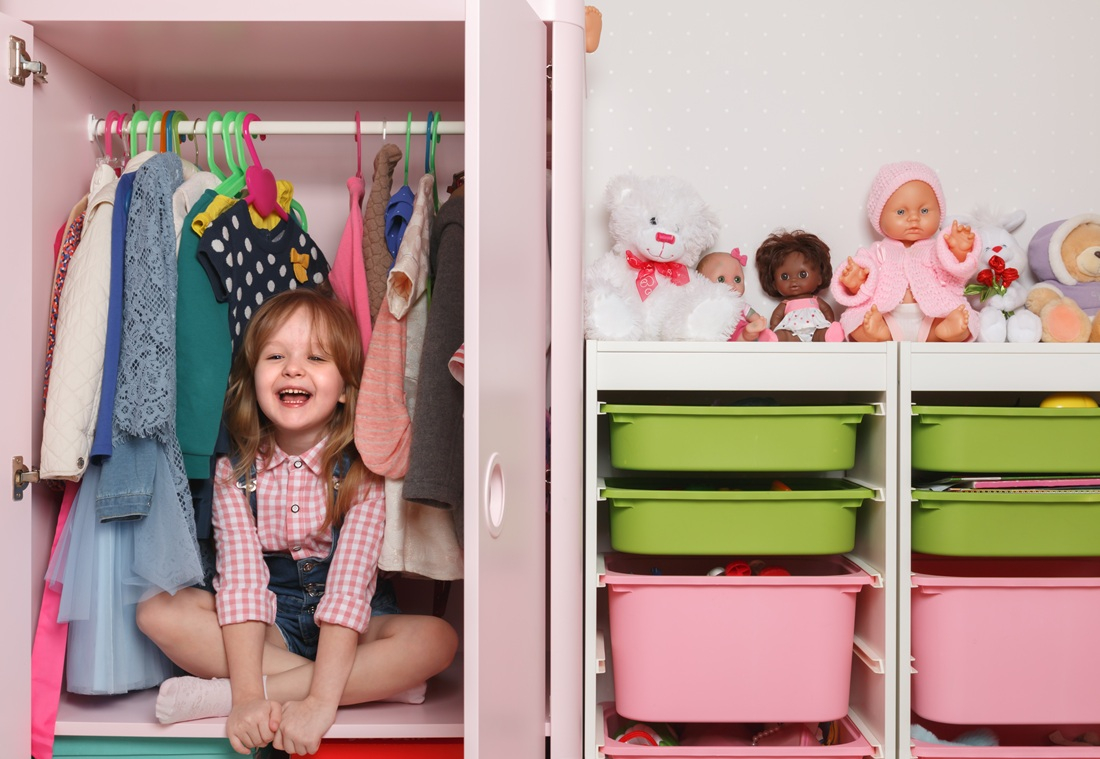
Make tidying part of the room’s flow — not a separate chore. The easier it is for your child to put things away, the more likely they are to do it.
6. Anticipate Changing Interests
Today it’s dinosaurs, tomorrow it’s space, next year it’s superheroes or ballet. Instead of locking into one theme, give your child freedom to evolve.
A few flexible, low-commitment ideas:
- A gallery wall where they can hang new drawings or posters
- Interchangeable bedding and cushions that reflect current favorites
- Decals or removable wallpaper that’s easy to switch out
- Clipboards or corkboards to display photos, achievements, or inspirations
- Floating shelves for books, collections, or seasonal items
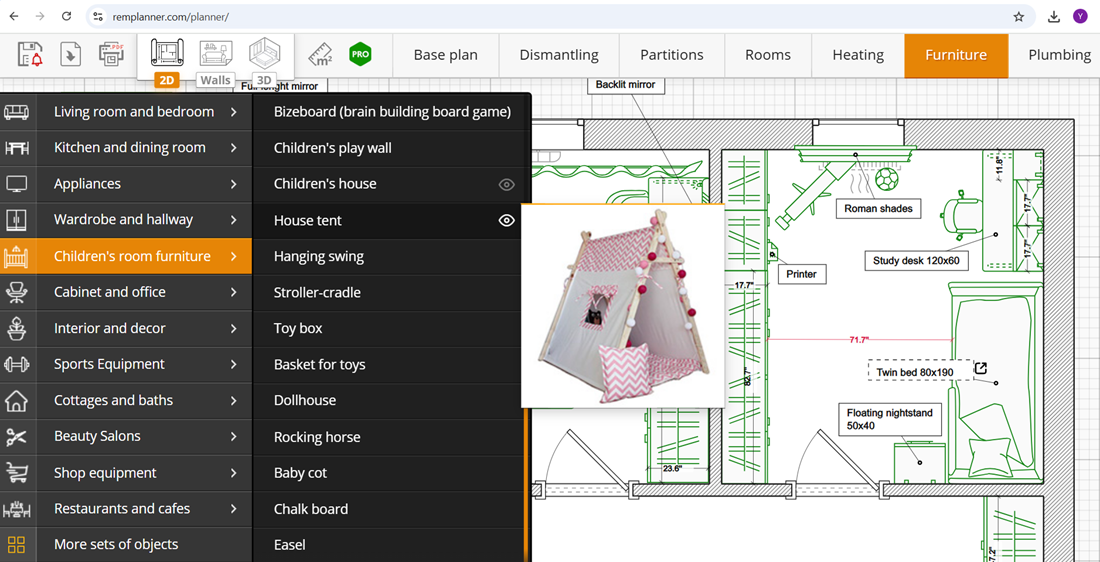
All kinds of hobbies are taken into account in Remplanner’s children's room catalog.
Make your child part of the process — let them help rearrange, decorate, or choose what to display. This helps them feel pride in their space and keeps their room a reflection of who they are now — not just who they were two years ago.
Conclusion
Designing a child’s room “to grow” isn’t about removing personality or playfulness. It’s about creating a strong, flexible foundation that evolves with time — just like your child does. With smart planning, adaptive furniture, durable materials, and meaningful storage, you can build a space that supports every stage of growth — from preschool to preteen and beyond.
Digital planning tools like Remplanner empower you to test ideas, visualize changes, and plan smart layouts from the start. Whether you're setting up the first crib or carving out a study corner for a ten-year-old, a little foresight — and the right tools — can go a long way.
In the end, the best kids' rooms aren’t static — they’re alive, loved, and always ready for what comes next.
 Antonella
Antonella